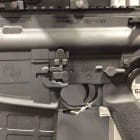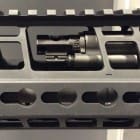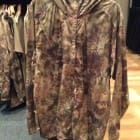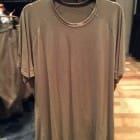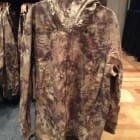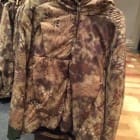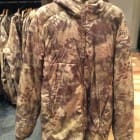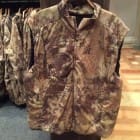The Marine Corps has issued a Sources Sought Notice to identify technologies for the upcoming Marksmanship Technology Demonstration (MTD) 2017 which will be held at Calvin A. Lloyd Range Complex, Weapons Training Battalion, Marine Corps Base Quantico from 19-21 September 2017 and is aligned with Modern Day Marine. This is a closed demonstration.
Weapons Training Battalion (WTBn), Marine Corps Base Quantico, is the proponent for marksmanship for the United States Marine Corps. As such, this demonstration will identify current and emerging technologies that demonstrate possible solutions to marksmanship gaps and inform Marine Corps future requirements development.
Last year, the Marines looked at Marine load and protection issues. This year, MTD 2017 will focus on five technology areas:
1. Small arms automated smart static targets
2. Small arms automated smart mobile targets
3. Infantry Rifle
4. Infantry Rifle Suppressors
5. Infantry Rifle Optics

To download PDF, click here.
1. Automated Smart Static Target Systems
The Marine Corps is interested in a target system that can be installed on current standard Known/Unknown- Distance Ranges and equipment that provide immediate, accurate shot to shot feedback to shooters and coaches on the firing line. The Marine Corps is interested in target systems that meet the following specifications:
* Able to accept any kind of target face
* Accurately plot shots on a display with a programmable target face
* Able to take in excess of 10,000 5.56mm impacts before requiring maintenance
* Networked to record each shot and display on tablet/computer located on firing line
* Able to support a 50 target frontage without interference from adjacent targets
* Able to run off of shore power
* Function in all weather conditions (i.e. rain, snow, mist, fog)
* System must be able to integrate with existing Marine Corps infrastructure, in order to ensure the original system may be used as a backup
* Centralized data collection system
2. Automated Smart Mobile Target Systems
The Marine Corps is interested in a target system that is a mobile, man sized 3-dimensional target that provides instant feedback to shooter and coach on a firing line. The Marine Corps is interested in a target system that meets the following specifications:
* A 3-dimensional man-sized target
* Able to move in any direction at variable /programmable speeds (2.5-10 mph)
* Provides accurate, immediate shot location detection as well as a means to provide shot feedback to shooters and coaches at the shooter’s position.
* A perimeter sensor system that could accurately depict misses around the target (6’x6′ example) that could be transmitted to a display located at the firing point for immediate coaching/shooter feedback.
* The target should react (as programmed) to hits or misses.
* The target could communicate with adjacent targets (Bluetooth example) and respond to each other to hits and misses (as programmed).
* Ability to place two target types on one platform that could be “presented” to the shooter (hostile/non hostile example) as programmed.
The target could generate heat for thermal optics.
* Able to take in excess of 10,000 7.62/5.56 mm round impacts before requiring maintenance
* Maintenance cycle that needs to take in consideration hours/days of training required to support up to 22,000 shooters a year.
* 10 hours sustained use before maintenance/recharging
* Centralized data collection system
3. Infantry Rifle
The Marine Corps is interested in rifles that incorporate technologies that are applicable to current and future battlefields. The Marine Corps is interested in a rifle that is guided by the following specific requirements:
Required Characteristics
* Upgrade package (URG + fire control group) or complete rifle with enhanced M27 like capability and features
* Free floated handguard 13” for use with 14.5” or longer barrel, 9.5” for use with 10.3/10.5” barrel. Accepts current authorized attachments (i.e., PEQ15/16, lights, etc.). System maintains accuracy and precision through all positons and means of support (free floated) be it sling, barricade, sandbag, etc.
* 14.5” barrel option, with 24,000 round life with AB49 – 2 MOA precision threshold, 1 MOA precision objective for majority of barrel life (Mean radius) (Army Capability Based Assessment requirements).
* Barrel may include low profile gas block but may not use taper pin
* Installation when using a barrel cartridge (i.e., barrel with gas block and barrel nut pre- installed) should take no more than 10 minutes threshold, 5 minutes objective (2nd echelon maintenance)
* Bolt carrier group optimized for M855A1 use with Picatinny Durable Solid Lubricant coating or any similar variations thereof
* Rail must maintain rigidity and alignment (to within 10 MOA) with the rifle’s zeroed point of aim when external pressures (up to 20 pounds) are applied 11” forward of the receiver (accounting for various means of supporting the weapon and weight of existing attachments and aiming devices)
* Rail must include continuous 1913 Picatinny rail at the 12 o’clock position with no interruption from the receiver rail to the handguard rail (semi-monolithic). Must include anti rotation features, may integrate into upper receiver.
* Rail must have integral forward 1913 Picatinny rail sections at the 3, 6, and 9 o’clock of 2-3” in length. Remainder of rail shall be M-LOK (like on SURG and ASR) at 3, 6, and 9 o’clock. Other surfaces may include holes/cutouts for air circulation and weight reduction.
* Rail must be field strippable in a manner similar to the M27 with captured bolts
* The rail may include a steel, or 7075-T6 aluminum barrel nut, but it must be non indexing in nature
* Rail must accept heat resistant rail covers of a similar nature and material to those found the M27
Desired Characteristics:
* Ability to fire AB39, .264 USA, .260 Remington, M80A1, etc.
* Modular bolt/barrel/magazine & magazine insert conversion packages for caliber changes (compatibility with A059, AB49, AB57, Mk255 Mod 0, etc) and optimized for respective caliber, charge, burn rate, and pressure curve (barrel threads can be 1/2X28 or 5/8X24)
* Novel approaches to lightweight rifle and ammunition
* Ambidextrous bolt catch and non-reciprocating charging handle
* Reversible magazine release and selector
* Adjustable length of pull stock, integral storage for spare bolt and QD sling attachment points
* Upper receiver will arrive with modular rail mounted sling attachment point
* Pistol grip sized for a 5th-95th percentile Marine
* Handguard sized 11-13” consideration to accessory use (lights, lasers, etc)
* Minimum mass cycling components to create no higher G-load than unsuppressed M110 SASS when fired
* High use of corrosion resistant alloys, coatings or treatments
* System deliberately built to perform at optimal level while suppressed – must divert gasses away from the shooter’s eye
* Bolt and barrel life greater than 15,000 rounds with no more than 200 FPS velocity loss
* Entire system serviceable at no higher than 2nd echelon maintenance level
* Coating or surface treatment in coyote brown in order to not stand out visually in combat environment, and desired reduction in IR signature.
4. Infantry Rifle Suppressor
The Marine Corps is interested in new and emerging suppressor technologies. The Marine Corps is interested in a rifle that is guided by the following specific requirements:
Required Characteristics
* Advanced venting to reduce back pressure, cyclic rate, and gas blowback
* Gas flow improvements to reduce or eliminate first-round flash
* Effective attenuation of noise and dust signatures – desired to be hearing safe
* Minimal and consistent point-of-impact shift of no more than 1.5 MOA
* Constructed of advanced high-temperature, corrosion resistant alloys with advanced coatings or treatments
* Service life of 24,000 rounds firing AB49 through a 14.5” barrel
* No longer than 6.5”, desired length 5” (overall length of suppressor), may fit over muzzle device
* Must include locking capability (fast QA/QD capability desirable, but primarily intended to prevent unthreading of suppressor and inevitable baffle strikes)
* May not weigh more than 20 oz.
* Suppressor shall not be capable of disassembly at 1st echelon maintenance level (cleaning interval shall be recommended by manufacturer on basis of weight gain due to carbon buildup if any)
* May include muzzle break/flash suppressor. If included, will utilize existing 1/2X28 threads. May use shims or washers to index properly. May require use of Rocksett to prevent unthreading during use. May not exceed 25 inch pounds of torque for installation. Signature reduction through mitigation of flash and blast overpressure (velocity of redirected gasses as well) is highly desirable.
* Existing NSNs, safety certifications, use or testing by other military agencies is highly desirable
5. Infantry Rifle Optics
The Marine Corps is interested in optics that incorporates technologies that are applicable to current and future battlefields. The Marine Corps is interested in upgrades that meet the specifications of one of the following items:
Required Characteristics
* Magnification from 0/1-8 power to PID threats (presence of weapon) out to 600M, and engage threats in close proximity
* Must possess large and forgiving eyebox and extended eye relief
* Included ambidextrous capable feature to rapidly adjust magnification with non firing hand
* Reticle features for engaging moving threats out to 150M and rapid ranging feature that accounts for average width of human head and of shoulders
* Compatible with clip-on current night vision or thrermal imaging devices (e.g PVS-24A, PAS-27, etc)
* Low profile elevation turret or cap – turrets locking or capped to prevent inadvertent loss of zero in combat conditions
* Scope base/rings must return to zero after removal
* Center of reticle must have daylight bright illuminated dot for close quarter use at 0/1 power.
* Must meet MIL-STD 810G environmental/durability requirements
Desired Characteristics
* Scalable and modular to accept future digital feature set and new reticles requirements
* Potential low end setting as red dot sight (RDS)
* Form factor comparable to existing COTS optics with similar mid range magnification
* Optimized for mounting height over rail at 1.54-1.93”
* Battery life comparable to that of Aimpoint M4S CCO (Army standard optic).
* Squad level networking and target designation capability
* Visually displayed point of impact cue (drawing information from laser rangefinder and ballistic solvers, integral and/or external)
Responses are requested no later than 14 July 2017. Visit www.fbo.gov for full details.




